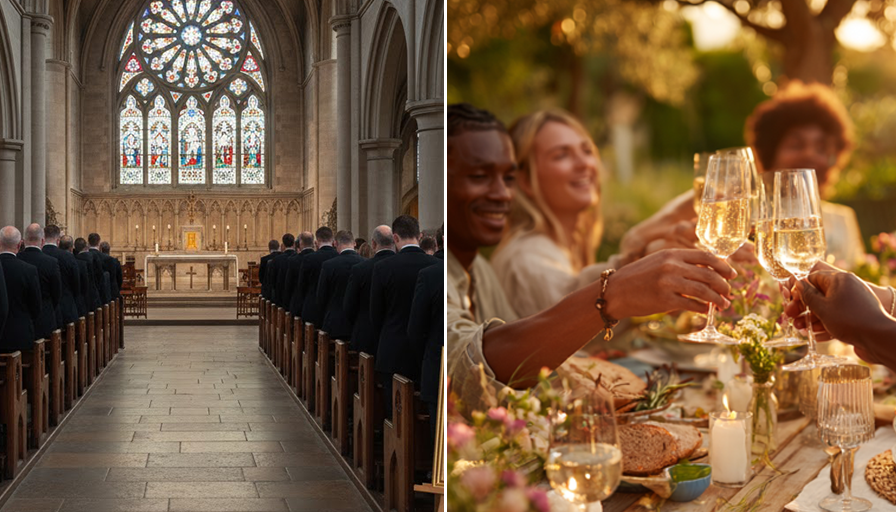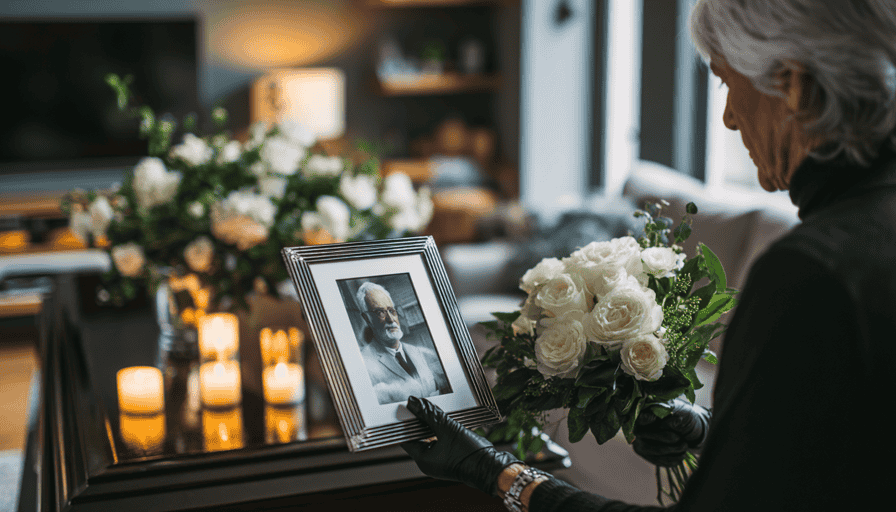Saying Goodbye, Your Way
When someone we love passes away, one of the first questions families face is: how do we honor their life? Should we organize a memorial service or a celebration of life? While both serve to commemorate the deceased, they differ in tone, structure, and emotional purpose. Understanding these differences helps families choose the format that truly reflects their loved one’s personality, values, and the wishes of those left behind.
What Is a Memorial Service?
A memorial service is a formal ceremony held to honor someone who has passed away. It typically takes place after the body has been buried or cremated and is often rooted in tradition or religious customs. Unlike a funeral, the body is not present.
Memorial services are usually held in places of worship, funeral homes, chapels, or quiet outdoor locations. The tone is reflective and respectful, creating a space for mourning and remembrance. Eulogies, poetry readings, music, prayers, or video tributes may all be part of the program. The event is typically structured, following an order of service that brings comfort through ritual and familiarity.
Many families appreciate the extra time that comes with planning a memorial service. It allows distant relatives to travel, gives space to process the initial shock of loss, and enables a carefully considered tribute.
What Is a Celebration of Life?
A celebration of life, as the name suggests, focuses on joyfully remembering the person’s essence, passions, and achievements. Rather than centering on grief or loss, it highlights the beauty of their life and the impact they had on others.
These events are often informal and personalized, taking place in meaningful settings like a favorite beach, park, home, or restaurant. Guests might wear bright colors or clothing that reflects the deceased’s hobbies, profession, or sense of humor. Instead of a strict schedule, the gathering may include storytelling, music, laughter, photo displays, memory jars, or even a group toast.
A celebration of life often feels like a reunion of friends sharing good times, filled with warmth, spontaneity, and connection. It invites people to smile through the tears, remembering not just how someone died, but how they lived.
The Key Differences
While both events are about remembrance, the difference lies in tone, structure, and intention.
1. Tone and Mood
A memorial service often has a more serious, reflective tone. It provides space for grief and quiet remembrance. A celebration of life, however, tends to be light-hearted and uplifting. It emphasizes happiness, memories, and the legacy left behind rather than loss.
2. Timing and Setting
Memorial services typically happen after the burial or cremation, sometimes weeks or even months later. Celebrations of life can take place at any time that feels right, often in informal locations like gardens, community centers, or private homes.
3. Formality
A memorial service usually follows a planned structure. There may be a program that includes prayers, music, readings, and scheduled speakers. A celebration of life is much less rigid. It can include spontaneous sharing, open mics, or activities that reflect the person’s hobbies and passions.
4. Dress Code
In memorial services, guests often wear darker, conservative clothing. In celebrations of life, it’s common to see bright colors or even outfits that reflect the personality of the deceased, like wearing sports jerseys, floral prints, or casual attire.
5. Focus
A memorial service centers on honoring the person’s life and acknowledging the sorrow of loss. A celebration of life centers on gratitude for the time shared and the joy that the person brought to others.
6. Purpose for the Living
Both serve an important role in helping loved ones heal. A memorial service offers structure and familiarity, which can bring comfort in times of deep grief. A celebration of life offers emotional release through laughter and connection, reminding everyone that the person’s spirit lives on through their memories.
| Aspect | Memorial Service | Celebration of Life |
|---|---|---|
| Tone and Mood | Reflective, solemn, structured | Uplifting, informal, expressive |
| Timing | After burial or cremation | Any time that feels right |
| Setting | Church, chapel, funeral home | Home, park, beach, favorite place |
| Program | Planned with speakers, readings | Flexible, open sharing, personal stories |
| Dress Code | Dark, formal attire | Colorful, casual or themed attire |
| Main Focus | Honoring the life, processing grief | Celebrating joy, legacy, and personality |
How to Choose What’s Right
The decision isn’t about choosing the “correct” label. It’s about creating an experience that feels right for your loved one, your family, and your community. Ask yourself:
- Did the person value tradition, ritual, or religious customs?
- Would they prefer an uplifting, casual gathering full of music and stories?
- Is your family in need of a structured event or something more open and emotional?
- Would combining both formats serve your needs better?
There’s no rulebook. Some families start with a small private memorial and later hold a larger, more festive celebration. Others weave both elements into one unique, meaningful event.
Planning a Memorial Service
Memorial services require more structure and often more time to organize. Here's how to approach it:
- Select the location: Consider a church, chapel, funeral home, or garden.
- Appoint speakers: Invite close friends or family to deliver eulogies or readings.
- Include music or readings: Choose meaningful songs, poems, or spiritual texts.
- Create a printed program: Helps guide guests and serves as a keepsake.
- Personalize the setting :Add photos, candles, favorite books or objects.
A well-planned memorial can offer immense comfort and space for shared grief.
Planning a Celebration of Life
This format offers more flexibility and creativity. It’s often driven by personality and storytelling.
- Choose a venue with meaning. Think about where they felt most at peace or most themselves.
- Set an open, warm tone. Encourage laughter, memory-sharing, and informality.
- Incorporate favorites. Serve their favorite food or drinks, play their music, decorate in their style.
- Add interactive elements. Memory walls, writing stations, or a guest book of stories.
- Close with a joyful gesture. A toast, planting a tree, or a group photo.
Sustainability tip: If releasing something into nature (balloons, lanterns), opt instead for biodegradable options like seed paper, flower petals, or floating candles.
Combining Both Approaches
Many families blend the reflection of a memorial with the energy of a celebration. For example:
- Begin with a moment of silence, followed by a curated slideshow.
- Move into shared stories, live music, or a toast in their honor.
- Conclude with a symbolic act like lighting candles or sharing handwritten messages.
Modern remembrance is about authenticity. Whether it's through food, music, art, or ritual, create a space that truly reflects who they were, and what they meant to others.
Why It Matters
The way we say goodbye shapes how we remember someone. Whether you choose tradition, celebration, or something in between, your goal remains the same: to gather in love, to honor a life lived, and to help the living heal.
Choose what feels genuine. Choose what would have made them smile.
Frequently Asked Questions
Is a memorial service the same as a funeral?
No. A memorial service takes place after the body has been buried or cremated. It often does not include the remains.
Can a celebration of life be religious?
Yes. You can blend spiritual elements into any format. A celebration can include prayers, blessings, or sacred music if desired.
What should guests wear?
Memorials typically call for formal attire. Celebrations of life allow for colorful, casual, or themed clothing. Include guidance in the invitation.
Can we do both?
Absolutely. Many families find comfort in holding both a solemn and a joyful remembrance.
Helpful Resources
- How to Write a Eulogy: A Compassionate Guide
- Understanding U.S. Laws on Scattering Cremation Ashes
- Scattering Ashes and The Law in the UK
- View our collection of urns for ashes
- Discover meaningful memorial jewelry
Final Thoughts
Choosing between a memorial service and a celebration of life is not just a logistical decision. It’s an emotional one. Take the time to reflect on the person you’re honoring. Were they quiet or outgoing? Traditional or free-spirited? Introverted or expressive?
Whatever you decide, know this: when people gather with love, memory, and intention, healing begins.
If you have any questions, comments or according to you certain information is missing after reading this post, feel free to contact us via the contact form.
















